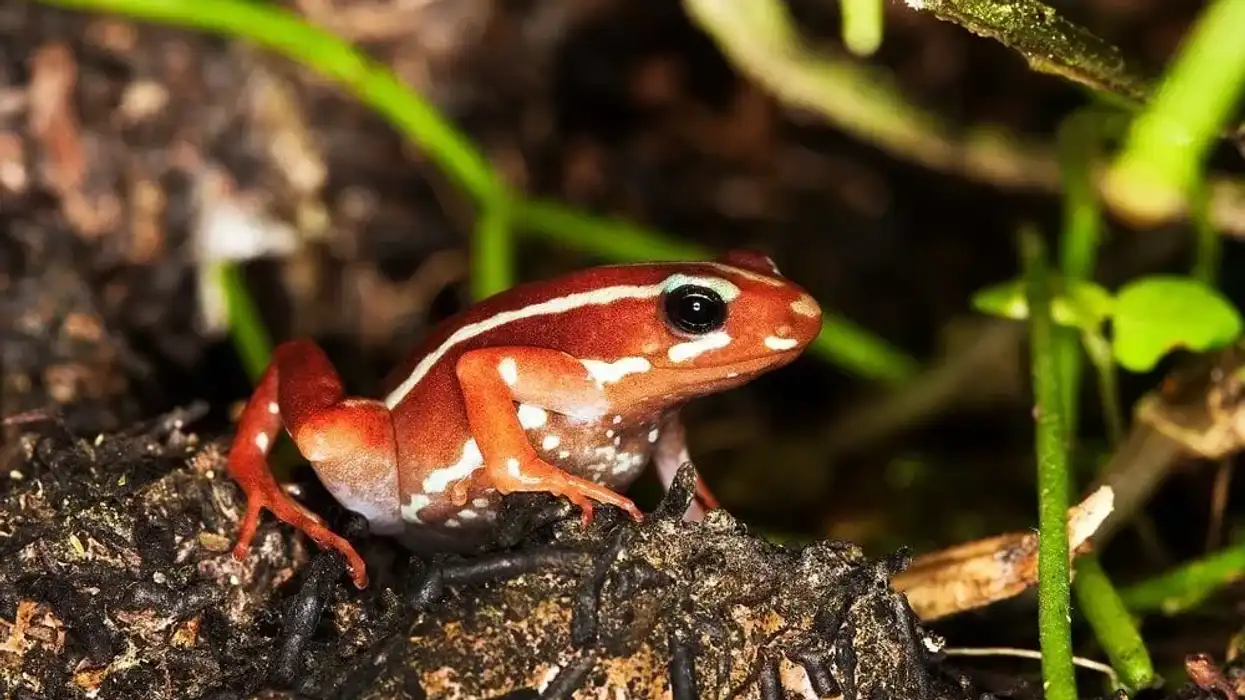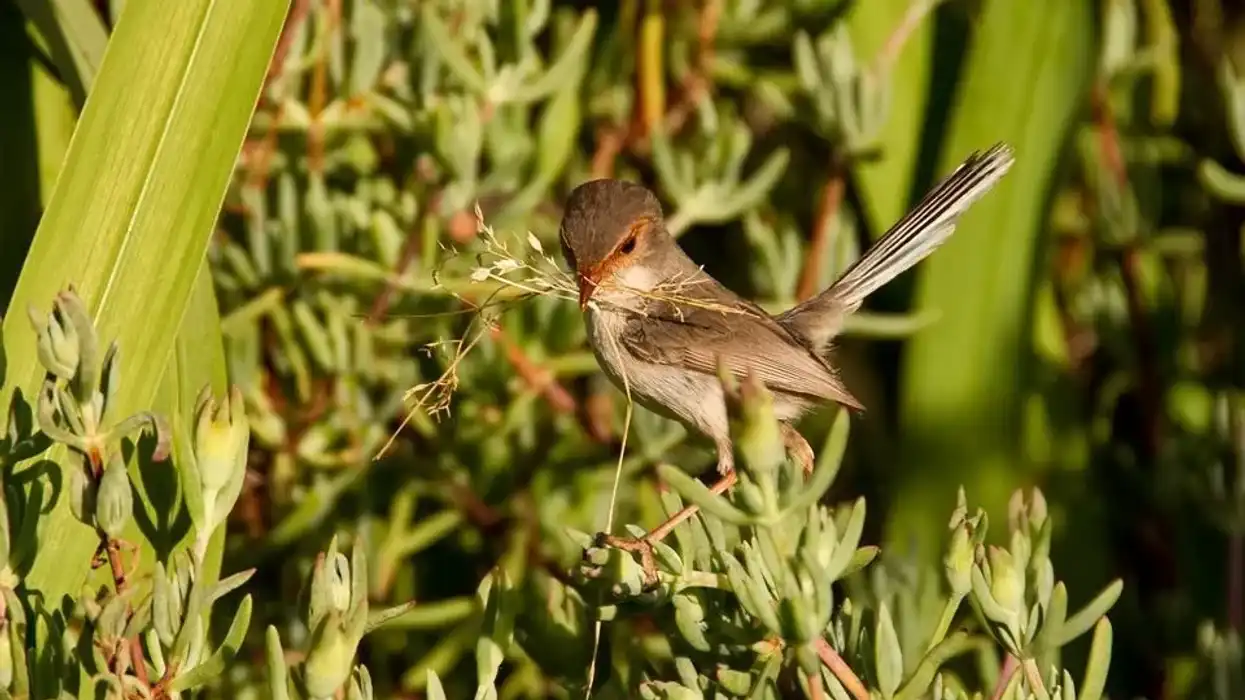There are a total of 30,000 species of wasps around the world. These wasps are of three types, namely paper wasps, hornets, and yellowjackets. Potter wasps are often mistaken for hornets or the Asian giant hornet, however, potter wasps are solitary beings. These wasps build nests in mud, existing holes, and sometimes even underground.
They don't sting even when they are lightly touched however they do have the potential to. These unique and exotic beings are an essential part of the survival of the ecosystem since they help control caterpillar populations that might harm garden plants.
They also pollinate our flowers and food crops. The caterpillars are paralyzed with the sting and serve as the only source of food for the young potter wasp species.
In this article, we will take a look at some fun and interesting facts about potter wasps. If you like this article then check out the huntsman spider and krill.
Potter Wasp Interesting Facts
What type of animal is a Potter Wasp?
The potter wasp belongs to the family Vespidae s a type of insect in the animal kingdom.
What class of animal does a Potter Wasp belong to?
The potter wasp is an arthropod and belongs to the family Vespidae and order Hymenoptera.
How many Potter Wasps are there in the world?
The exact population of the species is not known, however, they are primarily seen in the northern hemisphere and temperate regions in the world. Various other species of wasps look similar to this species and are often confused with one another.
Where does a Potter Wasp live?
A potter wasp is seen in temperate regions and the northern hemisphere. They are also seen living in woodlands and in and around gardens and farms. They are usually seen foraging on flowers.
What is a Potter Wasp's habitat?
Potter wasps live in woodlands, urban areas near gardens, as well as other temperate regions. Potter wasps are seen in the United States, Canada, and Australia. The potter wasp's nest is built on a brick wall in which case it needs to be dealt with very carefully. Finding a potter wasp nest can be challenging.
Who do Potter Wasps live with?
They primarily live on their own. They rarely travel together unless seen in and around their nests. They mate two to three times a year for which they come together. They should not be intentionally touched or harmed when seen as they have the potential to attack if necessary.
How long does a Potter Wasp live?
Usually, social worker wasps live for 22 days and the average lifespan of queens is about one year. The tarantula hawk is the most dangerous wasp species. The tarantula hawk targets spider's primarily.
How do they reproduce?
Potter wasps can have two to three generations in the same season. They live short lives. The mating season begins in spring, summer, and fall.
Adult Males mate multiple times however, females may or may not mate multiple times. All three processes happen together i.e. courtship, mating as well as laying eggs. Adult females lay one egg in each mud nests they construct for the offspring.
Potter wasp swarm defend and protect their nests. They paralyze caterpillars to provide it as food for the young ones. Post this they leave the domes and don't visit back to see if their offsprings grew or not.
What is their conservation status?
The potter wasps are classified as the Least Concern species by the International Union For Conservation Of Nature (IUCN).
Potter Wasp Fun Facts
What do Potter Wasps look like?

They have a small body and are delicate beings. They have long abdomens with metallic bluish brown wings. Their wingspan is up to 12.5mm.
They have black shiny bodies with ivory-covered markings on their face and skin. Females tend to be slightly bigger than males in body size. Wasps instantly perceive dark colors as a threat and have compound eyes.
How cute are they?
Potter wasps are exotic and vibrant to look at. They are small and cute but should not be touched or harmed intentionally since they have the ability to attack. They are solitary beings and best when left alone.
How do they communicate?
Potter wasps communicate through pheromones. Each wasp species has its own unique pheromones which it uses to communicate with other species.
How big is a Potter Wasp?
Potter wasps are one inch long which is ten times bigger than the smallest species of wasps i.e. the fairy wasps found in temperate and tropical regions and its size is 0.21mm.
How fast can Potter Wasps move?
Asian giant hornets travel at speeds of 25mph (40 kph) and potter wasps are often comparable. Potter wasps too have good speed and can move swiftly.
How much does a Potter Wasp weigh?
Potter wasps are extremely light, yet their exact weight is unknown.
What are their male and female names of the species?
Female and male wasps are not addressed differently however, both species have differences including females being larger than males primarily because they carry eggs. Male potter wasps cannot sting but in most instances act as if they can. Female potter wasps have the ability to sting and defend their nests
What would you call a baby Potter Wasp?
A baby potter wasp could be referred to as an egg initially and then as larvae. The adult females leave behind paralyzed caterpillars for the potter wasp larva to feed on and then leave the nests.
What do they eat?
Potter wasps are omnivores. Adults eat flower nectar and the young larvae only feed on caterpillars. In some instances, females leave behind up to 12 caterpillars for their young to feed on. Females have the capacity to sting hence protecting themselves from possible predators however they are consumed by predators like Dragonflies and praying mantis.
Are they harmful?
They are not harmful as long as they are not harmed but if they are threatened they have the tendency to sting, specifically if you have encountered a female potter wasp. Female wasps defend their nests.
Both mason wasps and potter wasps are capable of stinging. It's best to maintain a safe distance from the wasp to avoid any confusion and possible trouble later on.
If stung one should try their best to ensure to immediately treat it. Starting out with an ice pack is essential, followed up by medical help.
Would they make a good pet?
Wasps are innately wild animals and not best if kept as pets. If you wish to see them you should visit a facility where they exist.
Did you know...
The most dangerous species of wasps are the tarantula wasps. Their stings can be a matter of life or death. Spiders are the main diet of this species of wasp, and even they run away in fear.
A book titled, 'The Potter Wasp' was written by Hiroshi Ogawa discussing the life cycle, behavioral patterns, wasp nests, and habitats of potter wasps.
Some native American tribes mold their pottery to look like potter wasps. Potter wasps have importance in both their culture and environment since they are natural controllers of caterpillars.
Why are they called Potter Wasps?
Potter wasps are also known as mason wasps. They get their name from the pot-shaped nests they build for their offspring. They make use of pheromones to communicate. They remember faces and associate dark colors with negative things. They have the ability to evolve or exhibit choosiness under natural conditions.
How to get rid of Potter Wasps?
Flower nectar attracts potter wasps since they primarily feed on them. If a potter wasp pays a visit to your house don't worry you just need to follow a few simple steps.
Before getting rid of them one should wear protective gear to avoid getting stung.
Putting peppermint extract or any pest control in a spray bottle and spraying it in parts all over the regions they visit will instantly make them flee. If they have a nest it's best to seek the help of a professional.
The pest control is sure to destroy all the wasps or at least help in making them go away.
They are essential beings for our environment hence it's best to not kill them if possible. Potter wasp nests are harmless as long as they are not troubled, however, if they invade your house or personal space then follow the precautions before beginning to get rid of them.
Here at Kidadl, we have carefully created lots of interesting family-friendly animal facts for everyone to discover! Learn more about some other arthropods including the longhorn beetle and shrimps.
You can even occupy yourself at home by drawing one of our potter wasp coloring pages.









